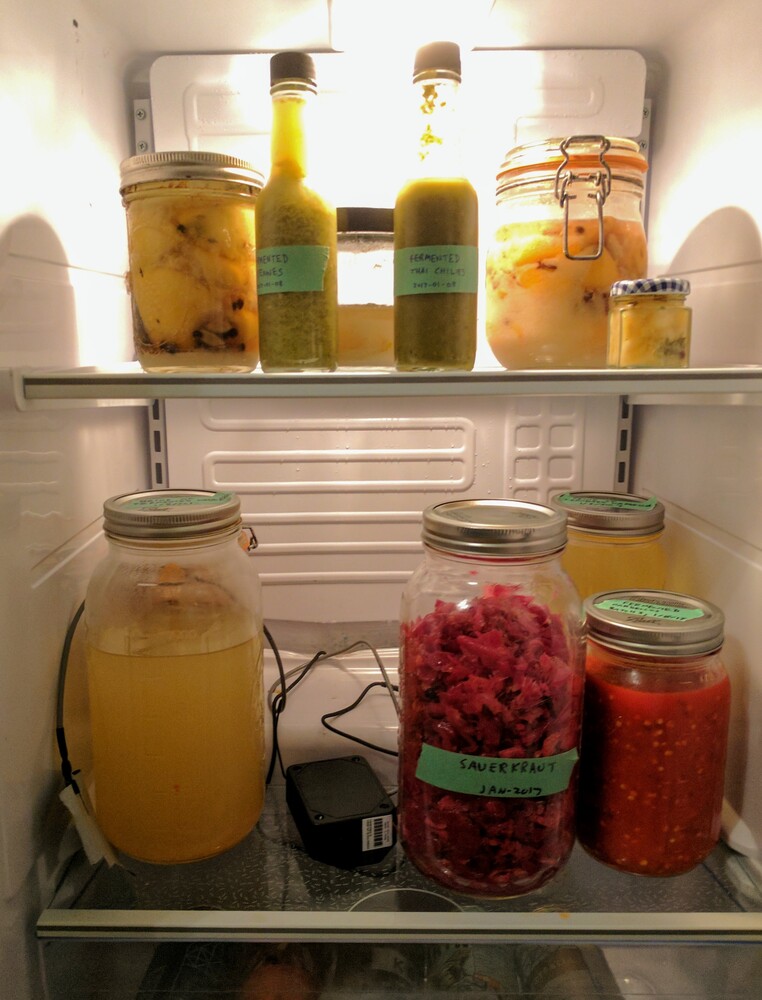This barely counts as a project because of how simple it was.
I wanted a fridge I could use for homebrewing in hotter months (keep beer at 60-70F, or cider at 50-60F), that I could use to homebrew lagers for the first time (control temperatures in the 35-55F range at different stages of fermentation), to slowly lacto-ferment vegetables (not really necessary, but to do longer, slower multi-week ferments around 60F even when it’s warmer), or even to retard bagels (rest in a cool place overnight to slow yeast growth while allowing lactobacilli a head start).
I’d read a bit about DIY ways to replace the thermostat on a conventional fridge… and then dug up a much easier way.
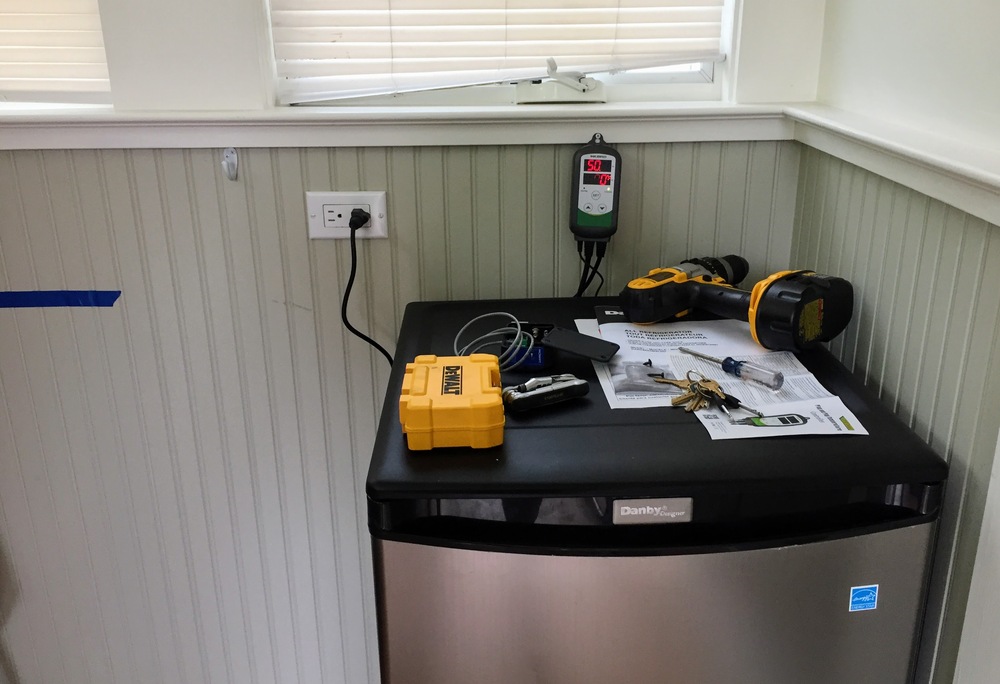 I bought a Danby DAR044 Compact Refrigerator
I bought a Danby DAR044 Compact Refrigerator

The Inkbird temperature controller is a simple pre-wired alternative to custom temperature control relay boxes many people build– it has a temperature probe and two outlets, and turns on whatever’s plugged into the “heating” outlet whenever the temperature is below a certain setpoint, and turns on whatever’s plugged into the “cooling” outlet whenever the temperatures above a different setpoint.
I just plugged the mini-fridge into the “cooling” outlet, with the temperature probe threaded up through an existing hole in the back rear of the minifridge that leads into a drip tray. You remove these two screws to remove the drip tray:
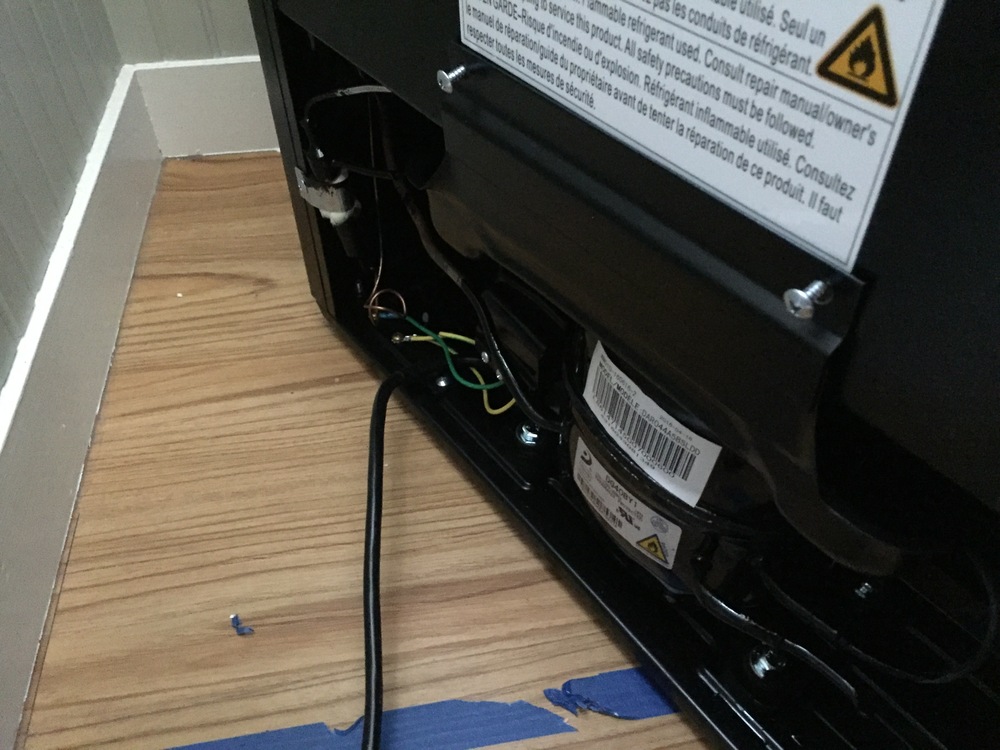
And use a drill to slightly enlarge the drip hole from the outside and fish the temperature probe up into the fridge: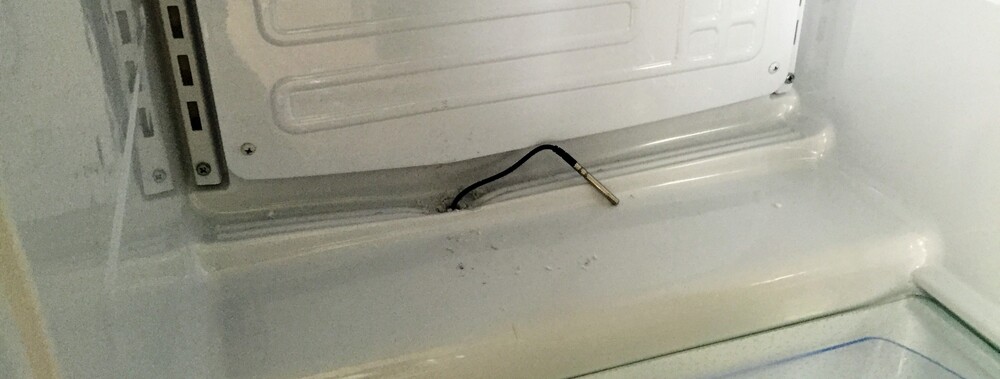
That’s it. It just worked.
It worked so well I set up a second fridge, so I could be fermenting beer or pickles in one (at 60-65F) while lagering or long-term storing fermented vegetables (or keeping beer cool) in the other at 35F.
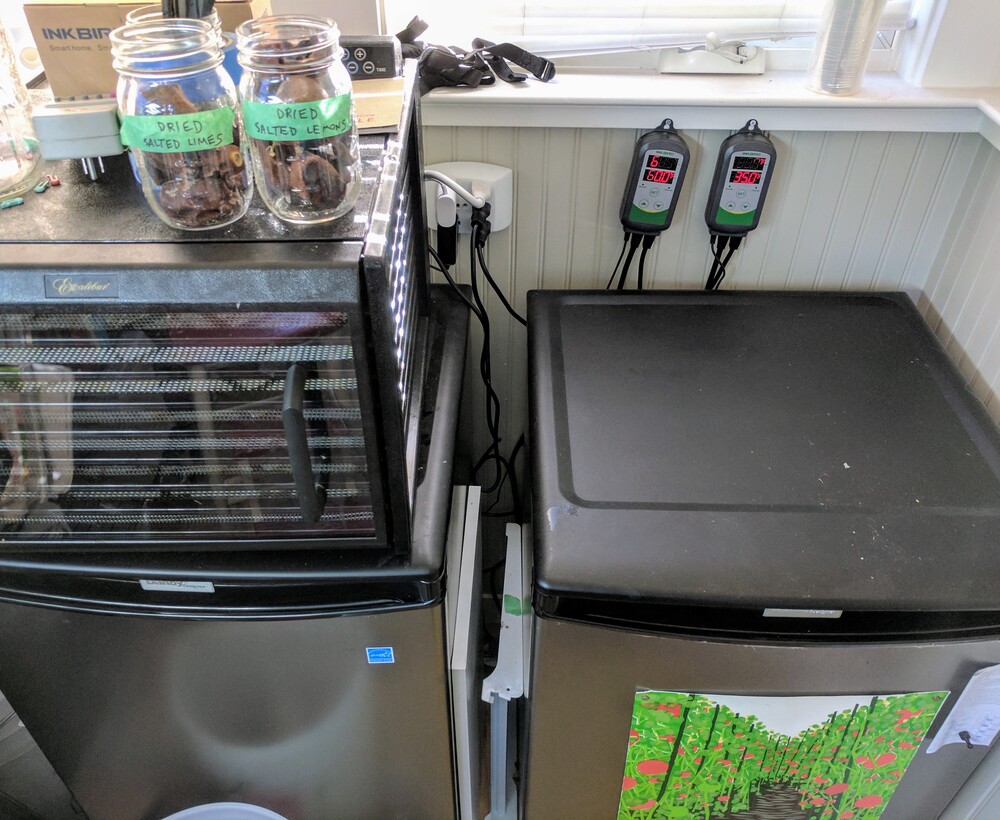
As one example, here’s the temperature of the fridge over the course of brewing a lager– at 55F for the first few weeks, raised to 65 for a few days, then lowered to lagering temp at 35…
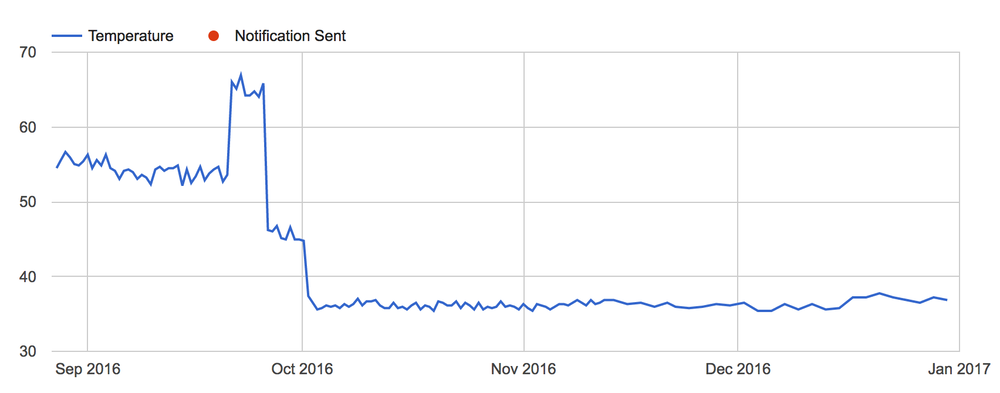
And typical contents: fermenting chiles, preserved lemons, and sauerkraut:
